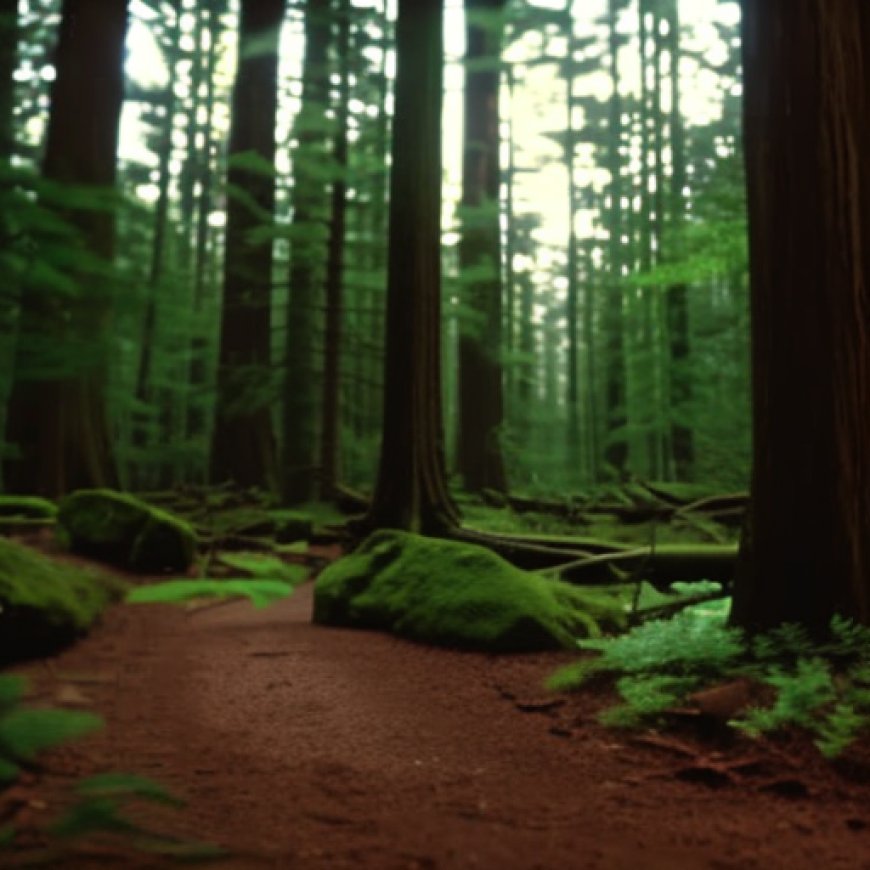An old growth forest comes alive 20 miles from downtown Cleveland
An old growth forest comes alive 20 miles from downtown Cleveland cleveland.com


Age and diversity
What sets Hach-Otis apart from other old-growth forests is the diversity of its species, said Adam Wohlever, regional preserve manager for the Ohio Department of Natural Resources.
It’s home to a remarkable variety of deciduous species, including oak, maple, tulip poplar, beech and black cherry, in addition to evergreen hemlocks.
Some of the trees, particularly the hemlocks growing among the steep ravines where it’s cool and dry, could be close to 250 years old, he said, because they likely would have been hard to reach back in the day when carts and horses were used to harvest trees.
A lot of life in old forests
But there’s more than just trees that highlight the old growth area of Hach-Otis. Mayapple and wild leeks, also known as ramps, dot the forest floor. During the hike, a keen eye spotted a jack-in-the-pulpit plant, and later the face of a raccoon could be seen tucked inside a large hole about 18 feet up the trunk of a maple tree.
Hach-Otis is also ideal habitat for certain birds, including the pileated woodpecker, which pecks rectangular holes in rotting tree trunks and sucks out carpenter ants with their lengthy tongue.
Adjacent to the old growth area are crumbling, sand-and-clay cliffs that slope up the west side of the Chagrin River and provide nesting cavities for bank swallows that return each spring from their winter home in Brazil.
Defining old growth
Only a tiny percentage of land east of the Mississippi River is considered old growth, said Brian Kane, Mid-Atlantic regional manager for the Old-Growth Forest Network, and the concept is elusive and not easy to define.
The network has its own guidelines, he said. First, there needs to be a density of mature trees, usually at least 120 years old, although there is no set age because what’s considered old for one species may not be for another, Kane said.
There are also visible clues. An old growth forest should have a lot of fallen, woody debris and something called pit-and-mound topography, which is a good indication that the property has never been logged, or at least not for a long time.
The pit is formed when a tree falls over and leaves a depression where the root ball had been. Over time, the pit can become a vernal pool where salamanders and other aquatic life breed. The decaying root ball becomes a mound.
It also helps to look up, Kane said. The tops of trees in an old growth forest are often distorted with age, and the trunks many be limbless much of the way up, having spent a lot of their energy over the years seeking sunlight.
And then there are the intangibles.
There’s a vibe one gets walking through an old-growth forest, Kane said. “There’s a spiritual presence.”
SDGs, Targets, and Indicators
-
SDG 15: Life on Land
- Target 15.2: By 2020, promote the implementation of sustainable management of all types of forests, halt deforestation, restore degraded forests, and substantially increase afforestation and reforestation globally.
- Indicator 15.2.1: Progress towards sustainable forest management.
The article discusses the Hach-Otis State Nature Preserve, which is a protected area with old-growth forests. Old-growth forests are an important component of sustainable land management and conservation efforts. SDG 15 aims to protect, restore, and promote sustainable use of terrestrial ecosystems, including forests. Target 15.2 specifically focuses on sustainable forest management, which is relevant to the preservation of old-growth forests. The indicator 15.2.1 measures progress towards sustainable forest management, which can be used to assess the conservation efforts in the Hach-Otis State Nature Preserve.
| SDGs | Targets | Indicators |
|---|---|---|
| SDG 15: Life on Land | Target 15.2: By 2020, promote the implementation of sustainable management of all types of forests, halt deforestation, restore degraded forests, and substantially increase afforestation and reforestation globally. | Indicator 15.2.1: Progress towards sustainable forest management. |
Copyright: Dive into this article, curated with care by SDG Investors Inc. Our advanced AI technology searches through vast amounts of data to spotlight how we are all moving forward with the Sustainable Development Goals. While we own the rights to this content, we invite you to share it to help spread knowledge and spark action on the SDGs.
Fuente: cleveland.com

Join us, as fellow seekers of change, on a transformative journey at https://sdgtalks.ai/welcome, where you can become a member and actively contribute to shaping a brighter future.







